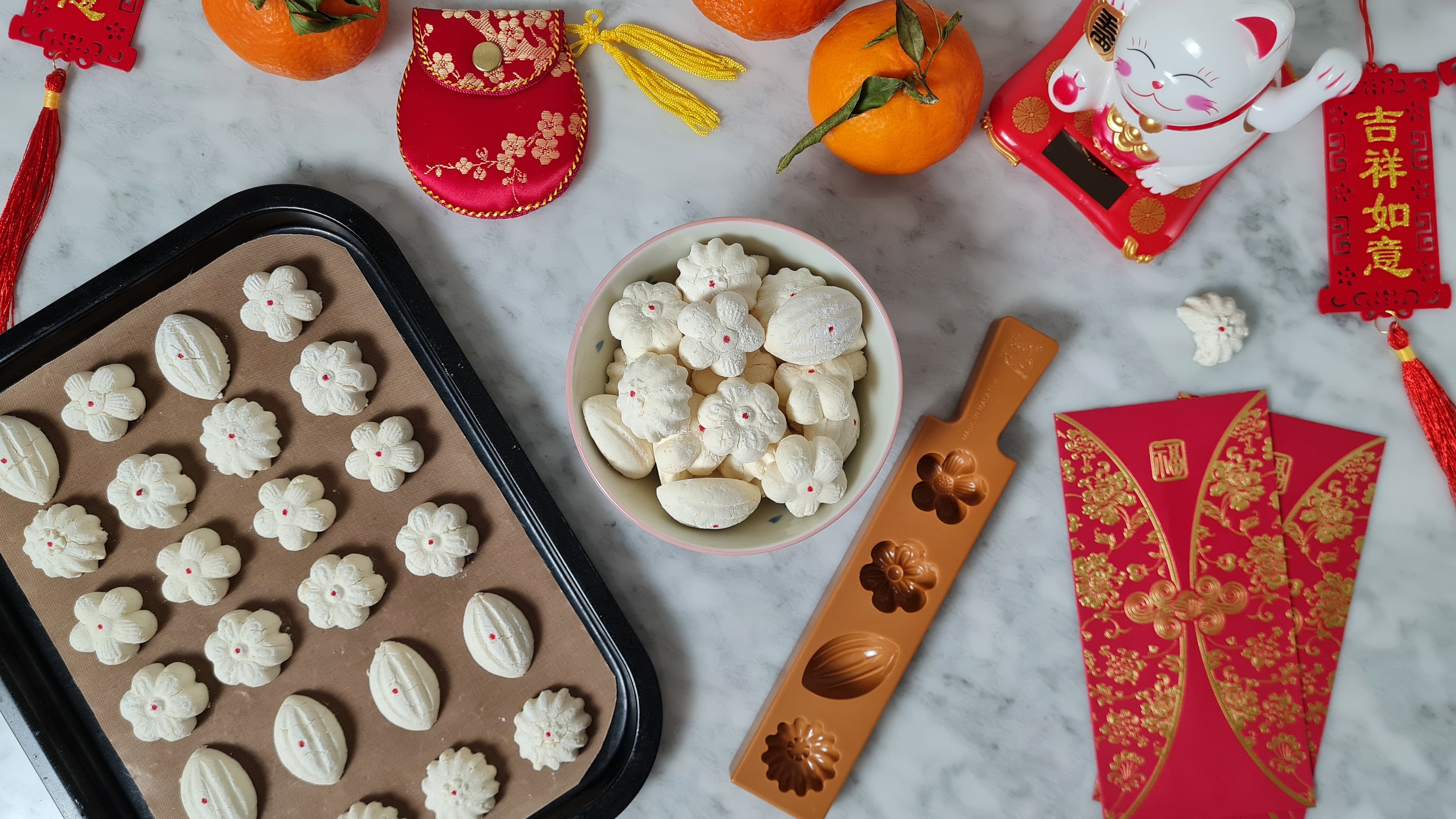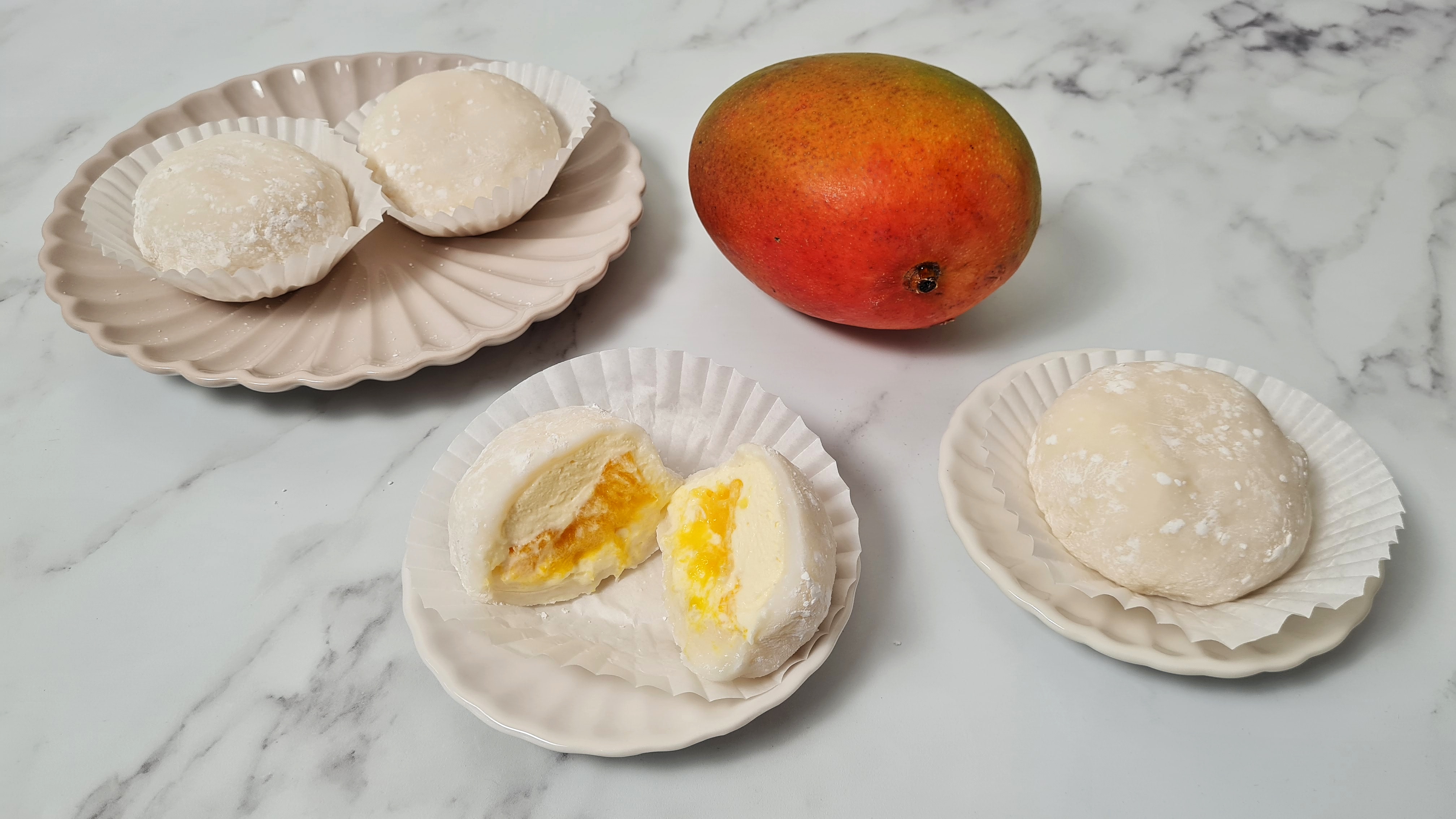Kuih Bangkit Recipe (Malaysian Coconut Shortbread Biscuits)
Melt-in-the-mouth kuih bangkit biscuits are another super popular Chinese New Year snack in Malaysia – they're made with coconut milk and cooked tapioca flour.
Kuih bangkit (literally meaning 'cake/biscuit rise') is kind of like shortbread in that the main ingredients are fat, flour and sugar, and the resulting biscuit is rich and crumbly.
It's important not to skip the first part of frying the tapioca flour. It's essential to dry it out as much as possible, while also infusing it with pandan flavour from the leaves. You must also use coconut cream rather than coconut milk for the most delicate, melt-in-the-mouth result.
Make sure you don't add all the coconut cream in one go, either – depending on how big or small your egg yolks are and even how humid the weather is on any given day, you may need a little less than 150g. This is why I add half at first, then the rest bit by bit (in this case I did end up using all 150g).
You can also watch me make this on my YouTube channel:
Ready? Let's go.
(Makes about 120 small kuih bangkit.)
Ingredients:
450g tapioca flour
8 fresh pandan leaves, rinsed and dried thoroughly
130g caster sugar
150g coconut cream
Egg yolks
Pinch of salt
To Decorate (Optional):
Red food colouring
Method:
1. Place the tapioca flour in a large wok, and cut the pandan leaves in roughly 4-cm lengths in with the flour.
2. Fry over a medium heat until the pandan leaves are crisp and dry, stirring constantly and carefully so the flour doesn't go everywhere.
3. Let the flour cool completely (preferably overnight with the leaves still in it) before passing through a fine sieve into a large bowl and discarding the leaves.
4. Measure out 380g of the flour in another large bowl for the biscuits, and set aside the rest in a smaller one for dusting your kuih bangkit mould later.
5 In a separate bowl, whisk the sugar, egg yolks, HALF of the coconut cream and salt together until pale and fluffy. Stir into the 380g of flour until you have a crumbly dough that sticks together when pressed with your hands (add a little extra of the remaining coconut cream teaspoonful by teaspoonful if it's still too dry).
6. Preheat the oven to 150°C and line a few baking sheets with nonstick baking paper. If you're not using the 'magic' reusable kind, dust a fine layer of the remaining tapioca starch on top of the paper for extra nonstick insurance.
7. Thoroughly dust your kuih bangkit mould with more of the remaining tapioca flour, and press small portions of your dough firmly into it. Give the mould a few firm taps on the counter to free the biscuits, and place them straight on a prepared baking tray. Repeat again and again until you've used all the dough up, flouring the mould well in between uses.
8. Bake the biscuits for 20–25 minutes, or until the bottoms are just starting to go golden (even better if you can catch it just before this happens). Leave the biscuits to cool completely.
9. To decorate them, dot a little red food colouring on top with a toothpick. This is easiest with liquid food colouring, but if you only have gel colouring (like me), just mix the colouring with a few drops of water to thin it down.
Enjoy, and have fun. Gong xi fa cai!



Comments
Post a Comment